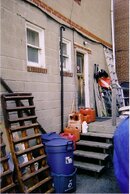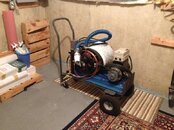Again just another thought on that automotive air intake filter, try again the charging rate time test with and without the air filter fitted
just to make sure its not starving the pump at full 1500 RPM.
Ref the vacuum cleaner note above...more likely the filter is laughing with this kind of puny flow @ 5cfm.
One last note on the intake tubing, it really dampens out the intake pulse sound - more of a nice growl that I can stand without ear-buds vs without anything...







